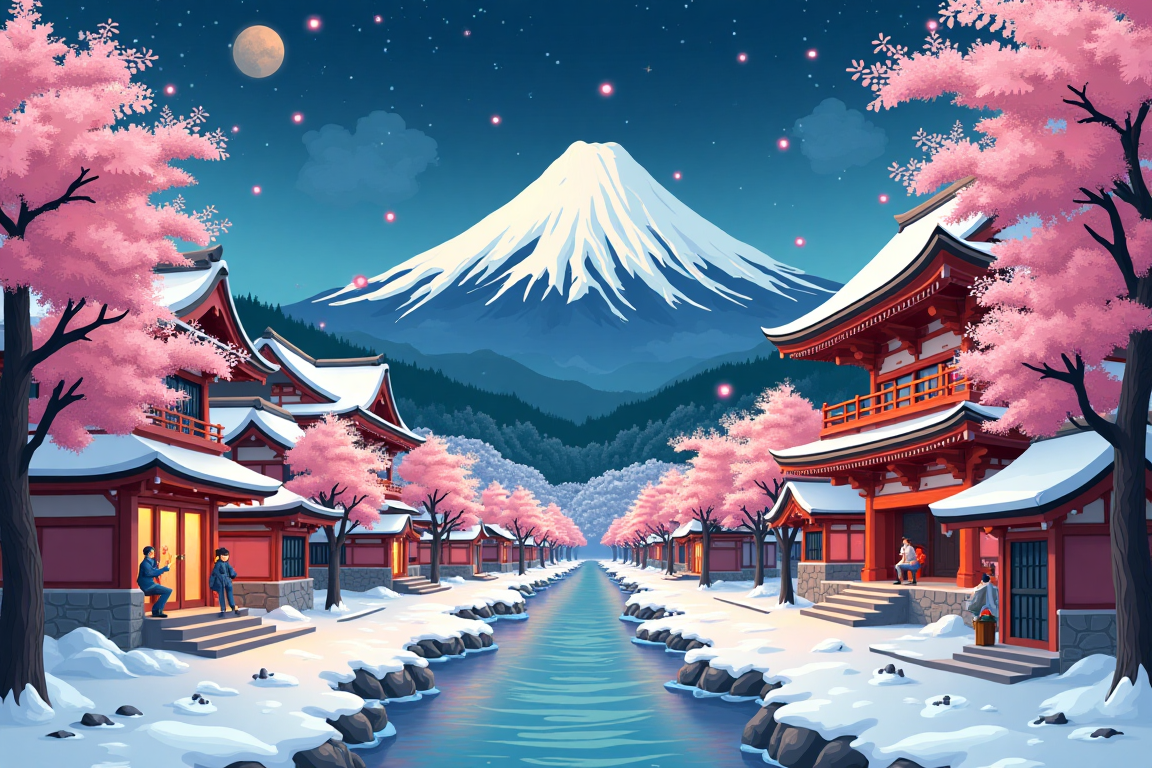How Japan Throws a New Year’s Party (and Why You’ll Want to Join!)
Ah, New Year’s Eve. The night of questionable resolutions, countdown chaos, and that one relative who insists on singing “Auld Lang Syne” off-key.
But in Japan? Totally different story. New Year’s (or Oshōgatsu, as it’s called) isn’t just another wild night—it’s a carefully curated masterpiece of tradition, family, and food. And yes, there’s still a countdown. But instead of watching a ball drop, you might just hear 108 bells ringing at a Buddhist temple (more on that later).
Curious? You should be. Let’s take a trip to Japan’s New Year celebration and find out why it’s one of the most wholesome, meaningful, and yes, delicious holidays out there.
The Calm Before the (Not-So-Wild) Celebration
Unlike the Western world, where December 31st is all about loud parties and midnight kisses (or awkward almost-kisses), Japan treats New Year’s Eve as a time to cleanse and prepare.
Here’s how things go down before the big day:
- O-souji (The Great Year-End Cleaning): Think of it as spring cleaning, but with higher stakes. The goal? Sweep out all the bad luck and start fresh. It’s like deleting all your embarrassing texts before January 1st—symbolic and practical.
- Bonenkai (Forget-the-Year Parties): Co-workers gather for a final hurrah, drowning work stress in nomikai (drinking parties). It’s basically an office holiday party, but instead of regrettable karaoke, there’s deep existential reflection about the past year.
- Shopping Sprees for Osechi Ryori: Traditional New Year’s foods get snapped up faster than Black Friday deals. If you’re not careful, you’ll end up with nothing but leftover tofu and sadness.
A Countdown with a Spiritual Twist
When the clock strikes midnight, you won’t find people popping champagne or yelling into the night. Instead, you’ll hear Joya no Kane—the solemn ringing of temple bells 108 times.
Why 108?
Well, according to Buddhism, humans have 108 earthly desires (yes, including that midnight snack regret). Each bell chime is supposed to cleanse one of these desires. So theoretically, by the end of it, you’re a brand-new person… until you spot a plate of New Year’s mochi and start the cycle all over again.
The Real Star of the Show? The Food 🍱
If you thought Thanksgiving had the best holiday food, Japan’s New Year feast will make you reconsider.
Enter Osechi Ryori—a beautifully arranged, bento-box-on-steroids filled with symbolic foods that represent good luck, health, and prosperity.
Some must-tries include:
- Kuromame (Sweet Black Beans): Because nothing says hard work like chewing on beans.
- Kazunoko (Herring Roe): Symbolizing fertility. Not for everyone, but hey, it’s a conversation starter.
- Datemaki (Sweet Rolled Omelet): Looks like a scroll, so it’s linked to wisdom. Eat enough, and you might ace that kanji test!
- Ebi (Shrimp): With its curved back, it represents old age and longevity. So if you’re eating shrimp, you’re basically wishing for a long, happy life.
And let’s not forget Toshikoshi Soba, or “Year-Crossing Noodles.”
The rule? Slurp them down before midnight. The long noodles symbolize a long life, but break them before swallowing and, well… let’s not jinx it.
The First Sunrise: Because Mornings Matter Now
New Year’s Day isn’t just about sleeping off a food coma. It’s about Hatsuhinode—the first sunrise of the year.
People wake up (or stay up) just to watch the sun rise, believing it brings good fortune. You might spot folks at beaches, mountains, or even on rooftops, sipping warm tea and embracing the zen of a fresh start.
Compare that to January 1st in most Western countries, where people are waking up with smudged mascara and a headache the size of 2024.
New Year’s Fortune: Time to Get a Lucky (or Unlucky) Slip
Ever wondered what your future holds? Now’s your chance!
Omikuji are fortune slips you pull at Shinto shrines on New Year’s Day.
- If you get Daikichi (Great Blessing), congratulations! Your year is looking bright.
- If you get Daikyo (Great Curse)… well, better luck next time?
Pro tip: If you get a bad fortune, don’t panic. Just tie it to a nearby tree at the shrine, and the bad luck stays behind. (If only fixing real-life problems were that easy.)
Otoshidama: The One Time Kids Love Envelopes
If you’re a kid in Japan, New Year’s is basically Christmas Part 2.
Why? Otoshidama.
Japanese children receive money-stuffed envelopes from parents, grandparents, and relatives. The amount varies depending on the child’s age, but let’s be honest—no kid is complaining about cash.
Imagine waking up on January 1st to a stack of money instead of a resolution list that you already know you won’t keep.
Final Thoughts: Should You Celebrate New Year’s the Japanese Way?
If you:
- Love food? Yes.
- Appreciate quiet reflection over chaos? Yes.
- Want to get paid for being cute (as a kid)? Definitely yes.
So maybe this year, instead of battling it out for a club reservation or pretending to care about yet another diet resolution, take a page from Japan’s playbook. Clean your house, eat some lucky food, and start fresh with good vibes and a full stomach.
Happy New Year—or as they say in Japan, Akemashite Omedetou Gozaimasu! 🎍✨
What’s your favorite New Year’s tradition? Would you try celebrating it the Japanese way? Let me know in the comments!


